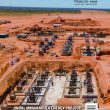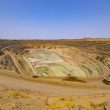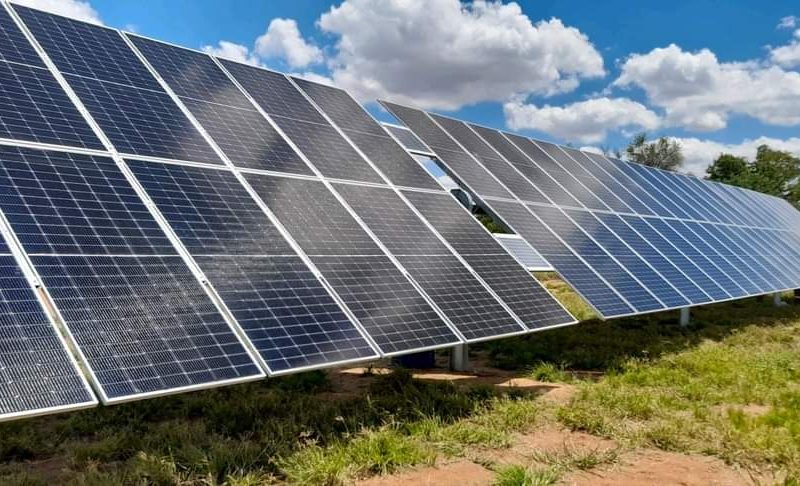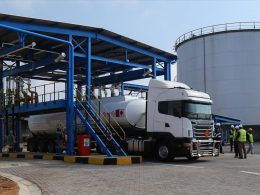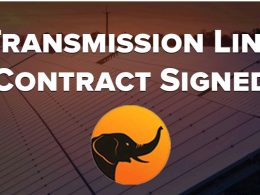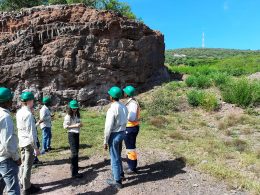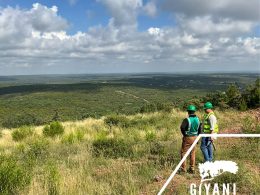Renewable Energy | Solar
Botswana has been announcing major moves recently in coal investments to cash from the existing demand in feasible future before the halt earnestly begins. Already, financing fossil energy is becoming an uphill task, with funding institutions leaning towards clean energy.
Botswana, the world’s biggest diamond producer by value, has more than 200 billion tons of untapped coal reserves. To leverage on the available coal reserves, it has turned to investors mainly from the largest global coal consumer, China.
Many believe, before the taps run dry, Botswana could cash-in from the coal industry to meet its energy demands as well as to export to countries such as China. Botswana aim to be net importer of electricity by 2030, with coal expected to contribute 85 percent towards electricity generation, and renewable resources only 15 percent.
The Western countries are more advanced in embracing the call for clean energy. Botswana, though a laggard in that respect — like most African countries — is making moves towards clean energy to prepare for the future.
Botswana has announced an ambitious figure in terms of renewable energy contribution to the country’s energy mix. Despite having set 15 percent contribution by 2030, government commits to having 50 percent contribution of renewable energy sources to the energy mix by 2036.
The Integrated Resource Plan (IRP), which will guide future power generation options, was approved in late 2020. The IRP will also promote competition in power generation by facilitating the involvement of Independent Power Producers (IPPs).
The implementation of the IRP is expected to satisfy local electricity demand from domestic generation facilities in order to be energy secure, as well as to create surplus capacity for export. It will also ensure environmental sustainability through the use of renewable sources of energy, according to government energy policy experts.
The IRP proposes a number of energy projects to be implemented by 2030 to meet the growing energy demand at least cost, to reduce the electricity demand-supply mismatch and the growth of the country’s carbon footprint.
These projects include 200 MW of large-scale solar photovoltaic (PV) generation capacity; a total of 35 MW smaller gridtied solar PV projects; a 300MW coal-fired power station; 100MW of coal bed methane (CBM) gas power plants; a 200MW concentrated solar power (CSP) plant; and 50MW from wind power.
Minister of Finance, Peggy Serame in her maiden budget speech indicated that procurement for the solar PV, coal and CBM projects has already started, and Botswana Power Corporation (BPC) has signed three Power Purchase Agreements (PPAs) with Independent Power Producers (IPPs). Two of these are for grid-tied solar PV plants in Shakawe and Bobonong and one is for a 10MW CBM facility at Kodibeleng.
Construction at the two solar PV sites commenced in February 2022, while commercial operation is anticipated to start in July 2022. Procurement of five more solar PV projects has been successfully completed, and BPC is about to sign PPAs for the first utility scale grid connected 50MW solar PV plant at Selebi-Phikwe, and four more small scale grid-tied solar PV plants for Molepolole, Lobatse, Maun and Ghanzi.
Regarding other solar PV projects, Serame said, BPC is retendering for a 50MW solar PV project for Jwaneng and six small scale grid-tied solar PV plants for Tutume, Kasane, Serowe, Tsabong, Kang and Charleshill as no suitable investors were identified for these sites from the original tender process. The eight IPP projects for which three agreements have already been signed and five are being concluded, reflect the progress with Public Private Partnerships (PPPs) in the energy sector.
Botswana’s National Energy Policy (NEP) adopted in 2021 recognise the country’s lack of progress in solar energy despite the abundance of solar energy potential. The policy indicate solar contributes insignificantly to the energy mix. It is mainly used for lighting, water heating and water pumping.
According to the energy policy, learnings from past experiences show that there are a number of barriers to solar energy development. These barriers cut across policy, institutional and regulatory framework, technology, market and capacity.
The initial capital cost for implementation of solar energy technologies is high in Botswana, despite the global trend of reducing costs. This comes from the fact that Botswana imports the technology in its entirety as there are no local manufacturers in this field.
Again, the current subsidy on conventional fuels deems solar energy less competitive hence a less conducive environment to attract investment into solar development, to both local and foreign investors. The absence of an appropriate legal and regulatory framework also poses a challenge to investors as this brings little confidence on the system, the policy stated.
The Government, in its energy policy, commits that it will support and facilitate initiatives that increase the development of on-grid and off-grid solar in order to increase the contribution of solar energy to the total energy supply mix.

